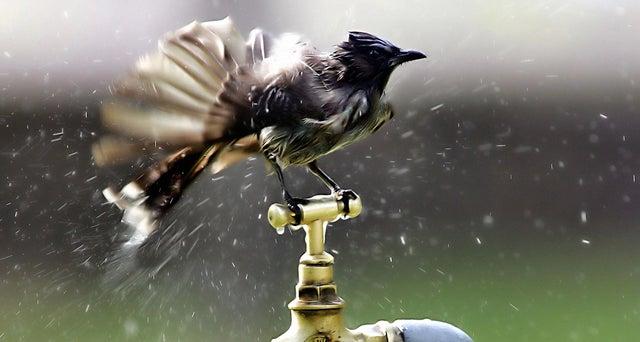Each year nightingales commute from west Africa to Europe to breed. Photo:AFP/Getty
Nightingales Adapting to Climate Change
By Patryk Krych | The World Daily APRIL 2nd 2020
Researchers in central Spain have recently announced their findings regarding the average nightingale’s wing length relative to its body size, and about how it has seen a fall over the course of the past two decades. A trend that some scientists have linked to Climate Change.
Nightingales are among the most well known songbirds in the world, and are famed for being able to produce at least 1000 different sounds. They’re known for being capable of producing far more notes in their songs than any other bird species, according to research carried out at the University of Bath.
Every year during the summertime, nightingales make a long and tough journey, travelling far from sub-Saharan Africa over to Europe where they breed. However, the species’ numbers in Southern England, where they choose to most often fly to, have declined by a noticeable 90% over the past half century. There are thought to be less than 7,000 nesting pairs left in the country.
There are multiple factors that can be considered and put to blame for the nightingale’s presence decline in England. One such factor is the issue of deer eating their preferred nesting sites, but another is due to the region’s early onset of spring and increased drought cause by a changing climate.
The nightingales have a shorter span of time in which they can raise their young, as the summer droughts last longer than they’re used to, not only in England but all across Europe, including Spain where the discovery was initially tested.
Dr Carolina Remacha who led the research, from Madrid's Complutense University, said that "Our results show that spring is delayed and the intensity of the summer drought is higher, which means a shorter optimal breeding period for the birds. We find the unique possibility that shorter wings are being favoured."
The scientists have shared their findings and their beliefs behind them, saying that birds, such as the nightingale, will typically have to adapt to the demands that come with a migrating species by having longer wingspans. This migratory adaptation would therefore also lead to the species having a larger clutch size, and a shorter lifespan (traits controlled by a set of linked genes). However, because of the changing temperatures along the Earth’s surface, these usual developments are seeing interference from their usual state and seeing drastic changes.
The researchers believe that the most successful of the birds are breeding to have smaller families with gradually shorter wingspans – a change that could drastically affect the bird's ability to migrate in winter. The need for smaller families came to the species along with the pressures of drought, with fewer young to feed giving them better chances.
“If we are to fully understand how bird populations adapt to new environments in order to help them tackle the challenges of a rapidly changing world, it is important to call attention to the potential problems of maladaptive change,” Dr Remacha added. “There is much evidence that climate change is having an effect on migratory birds, changing their arrival and laying dates and their physical features over the last few decades.”
By Patryk Krych | © The World Daily 2020






